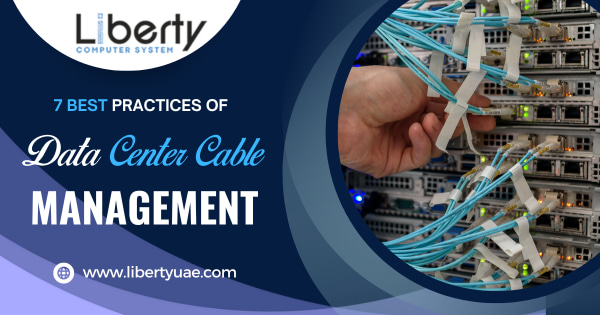In the digital age, data centers are the spine of our modern world. They house the servers, networking equipment, and storage devices that keep businesses and organizations running smoothly. However, an often-overlooked aspect of data center infrastructure is cable management.
Inferior cable management can cause inefficiencies, downtime, and expanded operational costs. To ensure a well-organized and efficient data center, implementing best practices for structured cabling in Dubai is essential. In this article, we’ll explore seven key practices for effective data center cable management.
What Is Data Center Cable Management?

Data center cable management refers to the structured organization and maintenance of the cables and wires within a data center environment. Data centers house vital IT infrastructure, comprising servers, networking tools, and storage devices, which rely on an intricate network of cables to function. Useful cable management is vital to secure the efficient operation, scalability, and maintenance of a data center.
Know The Best Practices Of Data Center Cable Management:
- Plan And Design Carefully – The foundation of a well-organized data center starts with meticulous planning and design. Before any cables are installed, create a structured cabling system blueprint that outlines the layout, cable routes, and equipment placement. Consider factors such as growth projections, redundancy requirements, and accessibility for maintenance. In Dubai, where businesses are constantly expanding, planning for scalability is crucial. A well-designed structured cabling system can accommodate future growth seamlessly.
- Label Everything – Clear and consistent labeling of cables is a fundamental practice for structured cabling in Dubai or any other location. Label both ends of each cable with unique identifiers, making it easy to trace and manage connections during maintenance or troubleshooting. Utilize color-coding for different types of cables or connections to enhance clarity further.
- Use Cable Management Tools and Accessories – Cable management tools and accessories, such as cable trays, racks, and cable ties, are indispensable for maintaining an organized data center. Invest in high-quality cable management solutions to secure and bundle cables neatly. This not only enhances aesthetics but also improves airflow and reduces the risk of accidental damage.
- Implement Proper Cable Routing – Effective cable routing is essential to prevent cable clutter and maintain proper airflow for cooling systems. Route cables along dedicated pathways, such as cable trays or conduits, to keep them organized and separate from power cables to minimize interference. Be sure to observe industry measures and the most promising practices for cable separation and bend radius.
- Document And Document Some More – Comprehensive documentation is invaluable for data center cable management. Create detailed records of cable layouts, connection diagrams, and equipment inventory. Use digital tools or management software to keep track of changes and updates over time. Documenting your structured cabling system in Dubai ensures that any technician can understand and maintain the infrastructure efficiently.
- Regular Maintenance and Auditing – Cable management is not a one-time task; it demands constant maintenance and auditing. Conduct regular inspections to identify and address issues like cable wear and tear, loose connections, or changes in configuration. Scheduled maintenance helps prevent unexpected downtime and ensures that the data center remains efficient and reliable.
- Train Your Team – Adequate training for your IT and data center staff is often overlooked but critical. Ensure that your team is well-versed in cable management best practices, as well as the proper handling and installation of cables and equipment. This knowledge empowers them to maintain the structured cabling system in Dubai’s dynamic business environment effectively.
Implementing these best practices for structured cabling in Dubai can significantly enhance the performance and reliability of your data center.
A well-organized and efficiently managed cable infrastructure not only reduces downtime and operational costs but also positions your organization to adapt to the ever-evolving demands of the digital landscape.
Some Advantages Of Data Center Cable Management:
- Improved Efficiency – Well-organized cables reduce the risk of human error during maintenance or upgrades, improving operational efficiency.
- Reduced Downtime – Clear labeling and documentation facilitate faster troubleshooting and reduce downtime in case of cable-related issues.
- Enhanced Scalability – Proper cable management allows for easier expansion and scalability as the data center grows.
- Better Airflow – Neatly routed cables promote efficient cooling within the data center, preventing overheating and equipment failures.
- Safety – Cable management reduces the risk of accidents and tripping hazards within the data center.
- Compliance – Many industries have regulatory requirements related to cable management and documentation. Compliance ensures that the data center meets these standards.
Conclusion
Data center cable management is a crucial component of keeping a strong and effective IT infrastructure. By planning carefully, labeling consistently, using appropriate accessories, routing cables properly, documenting thoroughly, conducting regular maintenance, and providing training, your data center in Dubai can achieve optimal cable management, ensuring seamless operations and scalability for the future.




.png)


